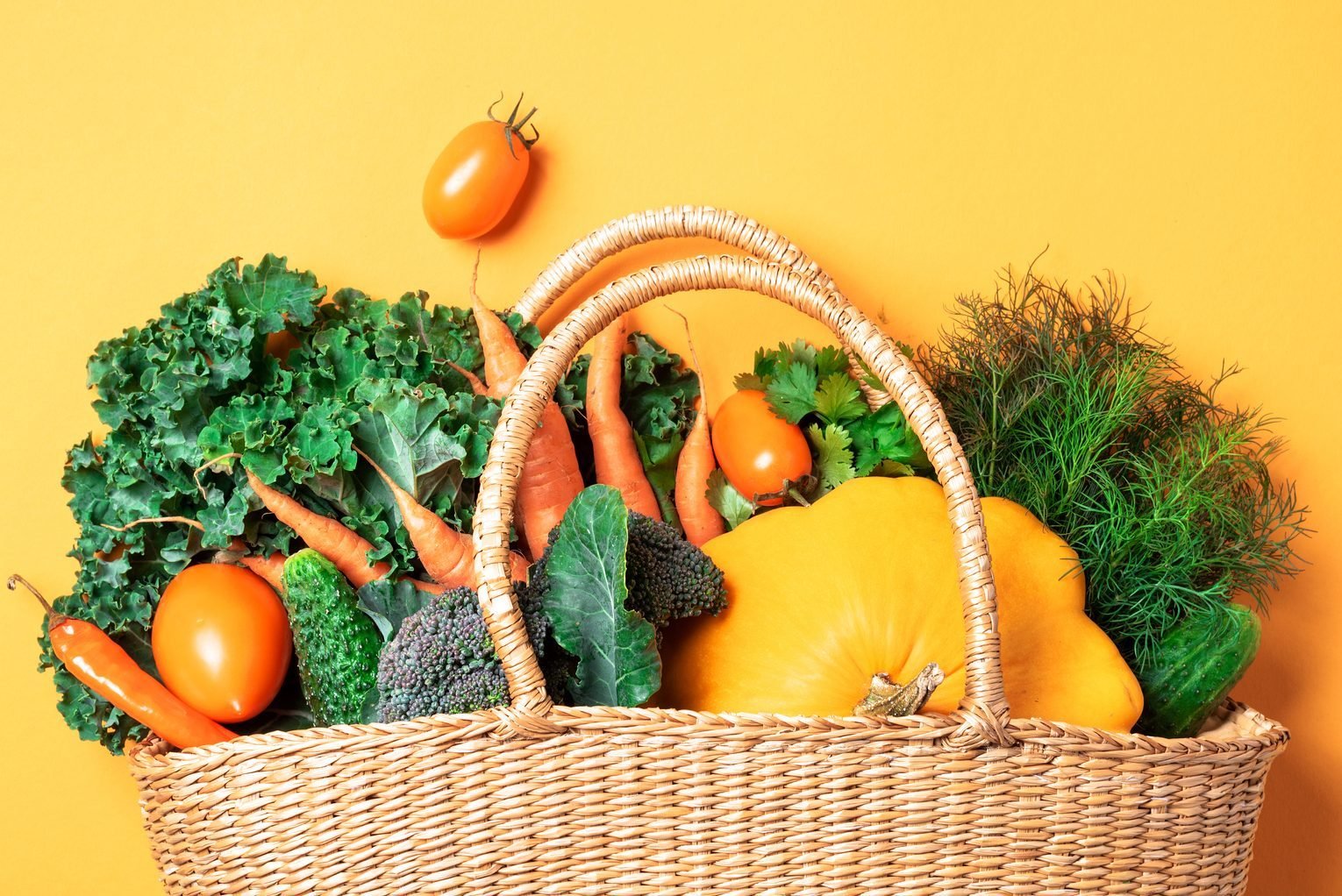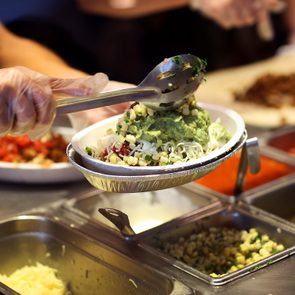Plant-Based vs. Vegan: How These Diets Differ
Updated: Apr. 06, 2021
A registered dietitian and plant-based diet specialist explains the difference between vegan and plant-based diets, including their nutrition and benefits. (Plus, get a day's sample menu for each!)
The rise of plant-based and vegan foods
The terms “vegan” and “plant based” are sometimes used interchangeably, but they don’t necessarily mean the same thing. One thing is certain, though: There’s major buzz about both. Google searches for vegan and plant based have increased over the past five years, suggesting the public is gaining interest in these diets.
The availability of vegan and plant-based foods has skyrocketed, too. According to a 2019 report released by the Plant Based Foods Association (PBFA), total plant-based food sales have risen by 31 percent, far outpacing overall grocery sales. During the pandemic alone, sales of plant-based foods increased by 90 percent.
Here’s the definition of plant based vs. vegan, plus how to determine if either approach is right for you.
What vegan means
A vegan diet excludes all animal-based foods. People who follow a vegan diet eat no meat, poultry, seafood, eggs, or dairy—you may know that. But what you might not realize is that vegans also avoid any ingredients derived from animal sources, including honey, collagen, and gelatin.
A vegan lifestyle extends beyond food. Vegans don’t use products sourced from animals in any way. So they don’t wear clothing made with leather, fur, wool, silk, or cashmere. And they avoid household goods, like cosmetics and soaps, that are made with any animal-derived ingredients or are tested on animals.
(Learn more about vegan clothing.)
What plant based means
The term “plant based” doesn’t have a formal definition, and there is some debate about its meaning. Some consider vegan and plant based to mean the same thing; after all, vegans eat only plant foods. Others follow a 100 percent plant-based diet but don’t refer to themselves as vegans because they use animal-derived products, such as leather.
The plant-based diet has also been linked to the broader term “whole food, plant based,” which is a low-fat (7 to 15 percent fat) plant-based diet that excludes processed foods, even if they’re vegan. On this diet, you’d skip bleached flour, isolated vegetable oils, refined sugar, and faux meat products. This specific 100 percent plant-based approach has been studied for its ability to positively impact chronic kidney disease, obesity, heart disease, and diabetes.
Still others, including the British Dietetic Association, define a plant-based diet as one that contains primarily plants, with few or no animal products. If you followed this diet, your intake would be about 5 to 10 percent animal-based. That’s in line with the diet of residents living in Blue Zones, areas of the world where people live the longest, healthiest lives, with low rates of chronic disease. That small percentage of animal-based foods may come from any source, including meat, poultry, fish, eggs, dairy, and others.
People who eat animal-based foods more than few times per week often refer to themselves as “plant forward” or “semi-plant based.”
Why the plant-based diet has gone mainstream
If you accept plant based to mean that some animal foods can be included, the designation captures many people who don’t fit neatly into vegetarianism or veganism. This is likely another reason for the term’s growing popularity.
For example, vegetarian means that no meat, poultry, or seafood is consumed, while eggs and/or dairy are typically eaten. People who eat eggs only are called ovo-vegetarians. Those who eat dairy only are lacto-vegetarians, and people who eat both are deemed lacto-ovo-vegetarians.
Pescatarian is a title for people who eat fish and seafood, but no meat or poultry.
In contrast, someone who follows a plant-based diet may eat meat occasionally, which means they’re not a pescatarian or any type of vegetarian. But they may not be an omnivore either, which implies eating all animal and plant-based foods. (Check out the plant-based food trends for 2021.)
Plant-based eating is also better accepted among the public. In a 2017 survey from Mattson, consumers were asked to select either vegan or plant based in relation to a series of questions. In every instance, plant based was selected by the majority of respondents.
For example, 79 percent chose plant based as more flexible, compared with 21 percent who picked vegan. Seventy-three percent said plant based tastes better, versus 27 percent who chose vegan. And 68 percent picked plant based as healthier, as opposed to 32 percent who selected vegan.
A certified plant-based seal
In 2018, PBFA and NSF International developed a Certified Plant Based seal. They define a plant-based food as a finished product made of ingredients derived from plants that include vegetables, fruits, whole grains, nuts, seeds and/or legumes. These foods may contain no animal ingredients, but the association believes that using the words plant based will appeal to more shoppers.
They say, “In the U.S., 39 percent of consumers are trying to eat more plant-based foods while only 3 percent are vegan. Vegan is a specific lifestyle and label, while plant based can include a wider array of people who enjoy Meatless Mondays or are flexitarian.”

Benefits of a vegan and plant-based diet
The benefits of a vegan and plant-based diet tend to overlap since they both focus on constructing a healthy and sustainable diet that’s good for the body and the environment. Both diets are rich in antioxidants and fiber, which is linked to protection against obesity, type 2 diabetes, heart disease, and cancer. And since vegans and plant-based eaters consume little or no red meat, they gain major heart health benefits over regular meat eaters.
Whether a plant-based diet offers benefits beyond those seen with a vegan diet depends on how it’s defined. A plant-based diet that allows for occasional meat may offer more flexibility than a vegan diet, particularly if you’re not ready to stop eating animal products altogether.
A whole food plant-based diet offers a different advantage: It cuts out processed foods. A vegan diet, on the other hand, allows for processed foods (provided they’re not made with animal products), some of which aren’t nutritious.
Vegan vs. plant-based meal planning
If you are about to adopt either a vegan or plant-based diet, the first step is to focus on what you can eat, rather than what you need to avoid. This will go a long way toward making the diet feel less restrictive.
A well-balanced vegan diet should include:
- A variety of veggies and fruits
- Whole grains, like oats, brown rice, and quinoa
- Pulses (the umbrella term for beans, lentils, peas, and chickpeas)
- Nuts and seeds
- Herbs and spices
A vegan diet may also incorporate substitutes for foods that are conventionally made with animal products, like plant versions of eggs, dairy, burgers, and the like.
A plant-based diet should include:
- A variety of veggies and fruits
- Whole grains, like oats, brown rice, and quinoa
- Pulses (the umbrella term for beans, lentils, peas, and chickpeas)
- Nuts and seeds
- Herbs and spices
- Any animal-based foods you choose to add
Some people opt to include just one or two non-plant ingredients, like pasture-raised eggs and fish. Others eat meat on occasion.
When planning meals, start with whole plant-based foods as the foundation of your eating routine, then build in additions where appropriate. In other words, the two meal plans aren’t that much different most days of the week, and which animal foods you include, if any, is up to you.
Plant-based and vegan meals
The chart below includes a day’s worth of meals for each diet, assuming the definition of plant based is a meal plan that allows for some animal foods.
Note: If you have three meals per day—that’s 84 meals a week—a 95 percent plant-based diet would include one meal per week that contains an animal-based food. A 90 percent plant-based diet includes two animal-based foods per week.
Plant based |
Vegan |
Breakfast |
Breakfast |
LunchGrain bowl made with leafy greens, chopped tomato and red onion, herbed lentils, quinoa, and seasoned tahini |
LunchGrain bowl made with leafy greens, chopped tomato and red onion, herbed lentils, quinoa, and seasoned tahini |
SnackFresh grapes and pumpkin seeds |
SnackFresh grapes and pumpkin seeds |
DinnerBroccoli sautéed in extra-virgin olive oil, broiled wild salmon, oven-roasted fingerling potatoes |
Dinner |
DessertChocolate avocado pudding |
DessertChocolate avocado pudding |
How to decide if going vegan or plant-based is right for you
You’re likely a good match for a vegan diet and lifestyle if you are passionate about animal welfare, have no reservations about giving up all animal-based foods and ingredients, and you’re OK with meeting some of your nutrient needs with supplements. (These are the vitamin deficiencies you may have if you’re a vegetarian or vegan.)
On the other hand, if there are some animal-based foods you are hesitant to give up, a plant-based diet may be best for you.
Keep in mind that depending on which animal foods you include and how often you eat them, you may still need to take certain supplements. (Vitamin B12 is one nutrient that’s naturally found only in animal products, like meat, eggs, and cheese.) And remember that a plant-based diet only includes one to two meals per week that contain animal products (but again, there is no universal definition).
If you want to eat more plant-based meals but the idea of limiting animal foods sounds too challenging, your eating routine generally falls into the category of semi plant-based.
To create some consistency, consider developing a concrete strategy for how often you’ll eat plant based. For example, aim for two plant-based meals per day, or eat plant-based meals at home but not when you’re away.
Whichever path you choose, continue to make whole, naturally nutrient-rich plant foods your focus. And aim for a variety, in order to obtain a broad spectrum of vitamins, minerals, and antioxidants. Eating more plants is always the best place to start. Next, check out these vegan documentaries that will help you decide if a vegan or plant-based diet is right for you.




















